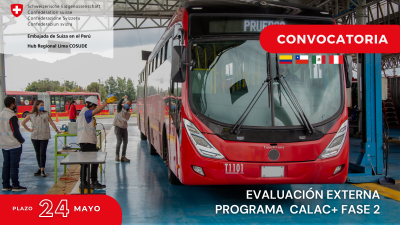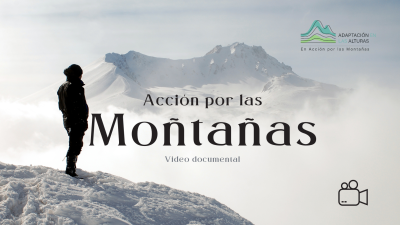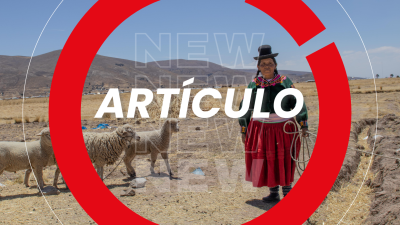Through the Climandes program, Senamhi, with funding from Swiss Cooperation, trains high Andean communities in Cusco and Puno to address climate change.
We invite you to learn about the experience and lessons learned in the regions of Cusco and Puno, in an article written by Francesca Garcia, a journalist with the El Comercio newspaper
Fortunato Puma Huanca looks up at the sky and forecasts that tomorrow it will rain. As the ‘yachachiq’ of his community, the Quechua word for ‘leader and teacher’, Fortunato keeps alive the knowledge he inherited from his parents and grandparents, country men and women who have long predicted the weather through the observation of nature.
He recognizes himself as a scientist of an unwritten ancestral science, the proponent of a method that seeks answers in indicators such as clouds, wind, stars, animal behaviour, insects or flower colouring.
It is a clear day in the rural community of Huaccaytaqui, which lies at over 3,200 meters above sea level, in the district of Quiquijana, province of Quispicanchi, Cusco. The clouds, synonymous with rain and water for harvesting, cover only a small area of the sky, something that in other times would have been unusual during the rainy season in the Andes. Fortunato walks through the countryside and explains how climate change has changed the community’s life.
“The sun no longer warms, now it burns,” Fortunato says, explaining the crop damage.
Leoncio Puma Durán, another of the community’s yachachiqs, says that in years gone by irrigation water used to last one week, but now there is only enough for three or four days. He recognizes that the farmers’ main concern is drought. They could protect the crops from hard frost or warm dry spells if they had warning, but the lack of rain between November and March would ruin it.
Leoncio is also an expert in cabañuelas, a set of traditional methods used in the Andes for long-term weather forecasting. With this technique, country people make a calendar that serves as a guide for the harvest. August is the key month. “A magical month,” adds Leoncio. August coincides with the Wata Qallariy, or beginning of the Andean agricultural year. The cabañuelas are based on the weather record of the first 12 days of August, each representing (from January to December) a month of the year. In other words, what happens on those days will reflect the future weather events of each month of the year.
 |
|
Through the Climandes program, Senamhi, with funding from Swiss Cooperation, trains high Andean communities in Cusco and Puno to address climate change (Photo: Alonso Chero). |
—Past and future—
Thanks to the drive of leaders such as Fortunato and Leoncio, for the past six years the community of Huaccaytaqui has been part of the Climandes (Climate Services for Development) project, led by the National Meteorology and Hydrology Service (Senamhi) and supported by the Swiss Agency for Development and Cooperation (SDC). A conventional weather station was installed in the community that allows the yachachiq to combine their ancestral knowledge with scientific measurement.
Leoncio Puma reads the station instruments three times a day (at 7 a.m., 1 p.m., and 7 p.m.) and writes the results on a blackboard. In this way other communities are kept informed and can take precautions against the risk of storms, rain, hail or frost. Leoncio says this information complements his own forecasts. “Sometimes the instruments give us data we already knew,” he jokes. He keeps a record of everything in a notebook that he carries with him every day.
“The information that the community has is fundamental to them for taking action and increasing their risk management, because they live in highly vulnerable areas,” says Teófilo Zamalloa Challco, agricultural specialist at Senamhi in Cusco.
Grinia Ávalos, Senamhi’s deputy director of climate forecasting and Climandes coordinator, stresses that the project’s main objective has been to produce climate services tailored to the needs of the community with a focus on inclusion and interculturality. She remembers that until a few years ago Senamhi generated information without corroborating its usefulness in practice. “We have changed that paradigm so that we can make climate-smart decisions in Peru, which is a country so vulnerable to climate change,” she says.
—Voices from the Altiplano—
More than 300 kilometres south of Cusco, in the peasant farmer community of Ilaya, district of Ilave, province of El Collao, in Puno, farmer Mario Jinez tells how the Pleiades, the constellation of seven stars named after Greek mythology, warn people when temperatures are going to fall drastically and allow them to make the most of the situation. Observing the sky at more than 3,500 meters above sea level is a necessary way of life.
“If the Pleiades shine brighter than normal, it means it’s going to freeze harder. That means it’s time to spread the potatoes to make chuño,” Mario explains. Making chuño, he explains, is the time-honoured way to ensure food security because it can be stored for up to seven or eight years.
Mario Jinez is a yatichiri, an Aymara word for ‘master’. Like hundreds of farmers in this area of the Altiplano, he is being trained by Climandes to strengthen their inherited knowledge and disseminate new knowledge. He also translates information from Spanish into Aymara and narrows the language gap.
 |
|
This is Mario Zapana, yatichiri of the Jacha Yacango community, Puno (Photo: Alonso Chero) |
A few minutes away, in the rural community of Jacha Yacango, Mario Zapana, another yatichiri, climbs to the top of a hill and sits down to watch the clouds that draw their silhouette perfectly in chiaroscuro. At 55, he has learned the scientific names of the clouds he has seen all his life.
“My grandparents taught us to recognize the signs of nature. We are here to share our knowledge and learn,” he reflects.
Senamhi experts acknowledge that science cannot explain the successes of ancestral methods. Officially, the weather forecast is for a maximum of three or five days and three months when it comes to the climate. Meteorologist Jhonatan Paredes Quispe emphasizes, after his experience with the yachachiq, that the important thing for both parties is to learn.
Source: El Comercio newspaper
Read online
Download article in PDF Interest link:
CLIMANDES, Project File, Embassy of Switzerland, Swiss Agency for Development and Cooperation COSUDE
,








